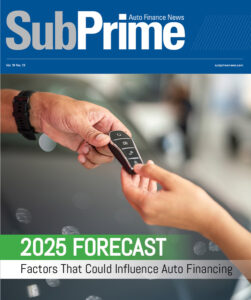CNW: CARS Buyers’ Remorse Drives up Late Payments, More
BANDON, Ore. — Apparently, CNW Research discovered in October that there was already a "fair amount" of buyers' remorse related to Cash for Clunkers purchases. Since that period, the remorse level has continued to climb.
More specifically, back in October, more than 17 percent of buyers indicated they likely should not have purchased a new vehicle under CARS. This compares to about 7 percent of buyers who purchased vehicles during the same time frame but did not take advantage of Cash for Clunkers.
"A follow-up survey conducted earlier this month shows the share of C4C users suffering buyers' remorse climbed to 19.4 percent while those non-C4C buyers slipped to 6.1 percent," Art Spinella, of CNW, explained.
And apparently, buyers' remorse is also playing a role in late payments, according to Spinella.
"Even 5 percent of the highest credit category users of C4C are late with at least one and as many as three payments," he pointed out. "Among mid-range or near prime users of C4C, about 6.5 percent have delayed at least one payment. And among subprime users of C4C, a staggering 18-plus percent have been late making at least one payment. These figures compare to 2.4 percent, 4.1 percent and 10.3 percent, respectively, for those who didn't use Cash for Clunkers."
Spinella went on to explain that many of the CARS buyers didn't think past the new car smell.
"Most, however, anticipated the economy improving substantially between last July and today and felt that improvement would give them the financial boost necessary to at least offset some of the additional monthly payment. That's one of the reasons the remorse figure climbed in January: The economic turnaround didn't come," he said.
Another mid-January analysis of the CARS data showed that those who used the program tend to have higher repossession rates than those who purchased vehicles outside the program.
"Broken down by credit tier, the most dramatic difference can be seen in the subprime category. In terms of repossessions, those who used C4C have hit a 4.8 percent repo rate compared to 2.24 percent of buyers of a similar ‘basket' of vehicles who did not use C4C," Spinella highlighted.
However, he said the data for prime and near prime repossessions is not as clear cut.
"While C4C users have higher repo rates, the numbers are sufficiently close this soon after the program ended that no real difference can be solidly pointed to," Spinella noted.
Continuing on, Spinella indicated that the fear by many in the industry that CARS sales were being brought forward from what would have been later months, or the first and second quarter of this year, has been unfounded.
"December sales at 1 million units were 14 percent ahead of the previous year and well beyond the anticipated 800,000 units. If C4C had in fact generated significant pull forward, the December figure would have been significantly lower. Instead, the boost in August sales was followed by a decline of similar proportions in September and return to trend line in November and December," he suggested.

 View The Latest Edition
View The Latest Edition

